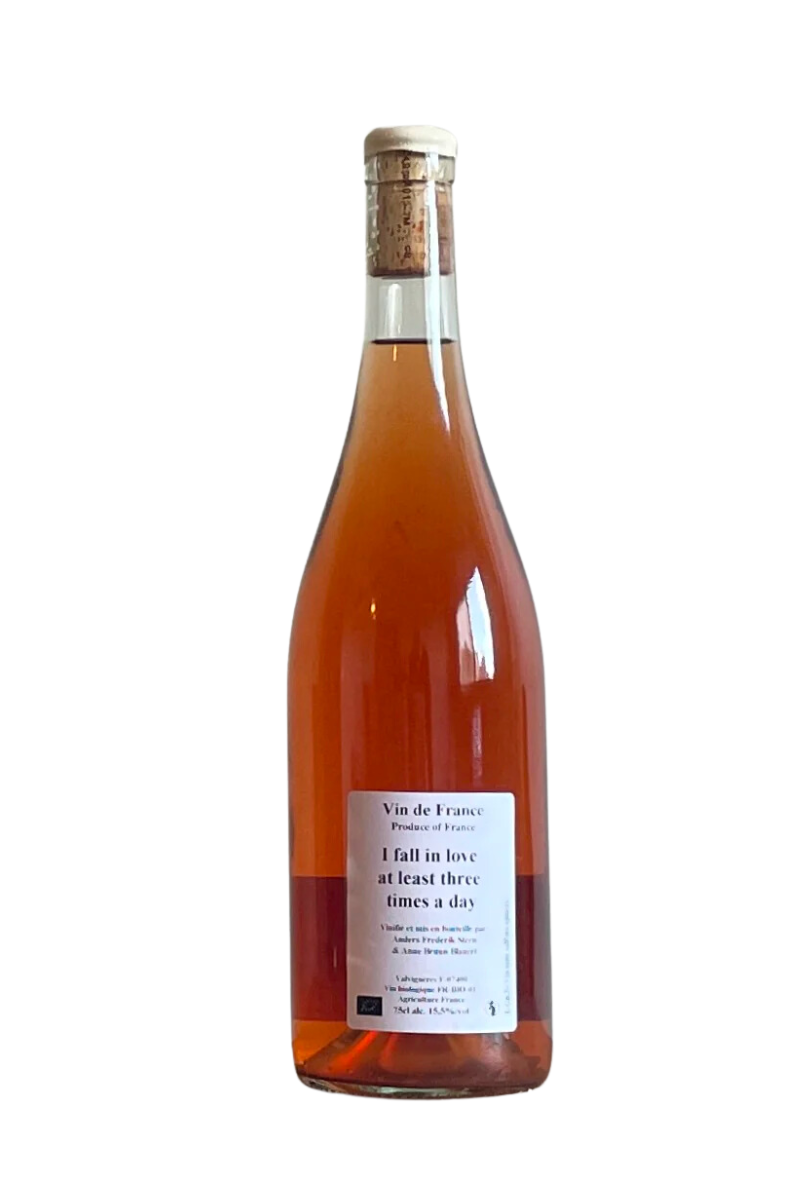
Anders Frederik Steen & Anne Bruun Blauert, I Fall In Love At Least Three Times A Day 2020
Origin: France
Grapes: Grenache Noir
"A wine that was intended as an experiment. In 2020 we wanted to press some red grapes like we do with our white grapes. Therefore, we made a press direct of Grenache Noir. We did this for 5 days. Every day we separated the juice. The juice of day one and five became another wine. Day two, three and four we blended and left it to ferment, age and find its balance in barriques. Because of a late harvest the alcohol became strong, and we decided for that reason to keep the wine in barriques for close to two years. We’re very happy for that decision. It gave us this slightly oxidative rosé. Something we haven’t seen before here in Valvignères." - AFS
The maverick artist of the Ardèche. For a winemaker, Anders Frederik Steen has an unconventional resumé. Before making wine, Anders was a trained chef who became a sommelier, working at Noma, then the highly acclaimed Relae and finally Manfreds. All iconic restaurants in his native Denmark. In 2013, Anders moved to the Ardèche in order to make wine full-time. His partner-in-crime was his favourite winemaker and personal hero, the legendary and enigmatic Jura winemaker Jean-Marc Brignot. Together, they produced his first two vintages. In 2015, Jean-Marc Brignot left to focus on a farming life in Sado, Japan whilst Anders remained with his family in the beautiful village of Valvignères to continue making wines.
Anders insists that his wines are made with “grapes and only grapes”. Whilst growing his own, he also sources his grapes from people he trusts, such as the neighbouring Oustric family of Domaine Le Mazel and the Bannwarth family in Alsace. His daring non-interventionist attitude and experience informs his winemaking in that he does not seek to follow rules or conventions and does not feel the need to do the same thing every year. Instead, as he harvests, he taste the grapes and then begins to imagine the kind of wine he might be able to make. As every year is different, the expressions of the grapes and terroir are never the same, and thus he adapts his approach accordingly. Names, blends, and styles change annually based on the flavours of the year’s produce.

